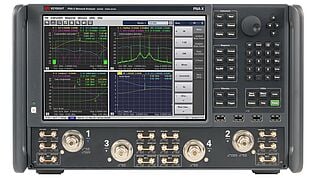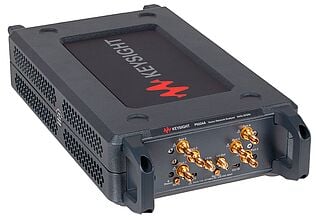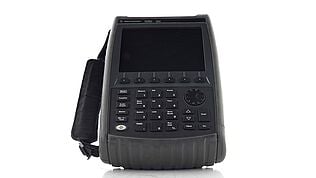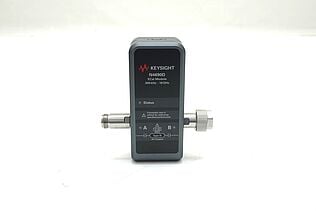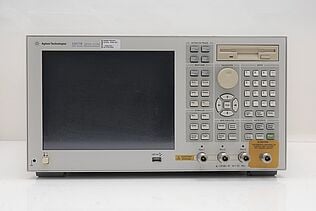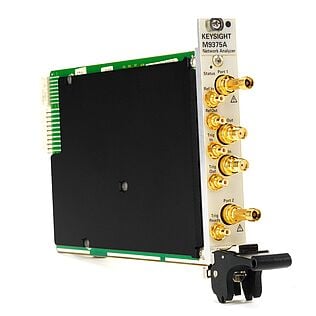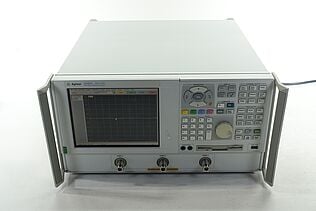- Introduction
- Understanding Network Analyzers
- Types of Network Analyzers
- Key Functions of Network Analyzers
- S-Parameter Measurement
- Impedance Measurement
- Filter Testing
- Antenna Testing
- Additional Functions
- How to Use a Network Analyzer
- Setup
- Calibration
- Measurement
- Analysis
- Additional Tips for Effective Use
- Measurement Capabilities of Network Analyzers
- Applications of Network Analyzers
- RF and Microwave Circuit Design
- Antenna Design and Testing
- Telecommunications
- Automotive Industry
- Conclusion
- Whenever You’re Ready, Here Are 5 Ways We Can Help You
Imagine you're working on a crucial project to improve the signal quality of a new communication device. You've designed the circuits, assembled the components, and now it's time to ensure everything works perfectly.
You connect your device to a network analyzer, a tool that reveals the intricate details of your design, showing you exactly how signals behave as they pass through your network.
This step is essential for fine-tuning your device, ensuring it meets performance standards, and avoiding costly errors.
Network analyzers play a key role in every reliable communication system, helping engineers like you achieve precision and excellence.
Understanding Network Analyzers
Network analyzers are essential tools in the field of electronics and communication engineering.
They are used to measure the network parameters of electrical networks, particularly in the radio frequency (RF) and microwave domains.
These instruments provide critical insights into the performance of devices and systems, helping engineers design and maintain high-quality communication links.
| Key Takeaway |
|---|
| Network analyzers are essential tools for measuring and analyzing RF and microwave networks. They help you design, test, and optimize electronic systems by providing accurate measurements of key parameters like S-parameters and impedance. |
Explore Keysight’s Range of Network Analyzers Today
Types of Network Analyzers
There are two main types of network analyzers:
- Vector Network Analyzers (VNAs): Measure both the magnitude and phase of network parameters, providing a comprehensive view of the network's behavior.
- Scalar Network Analyzers (SNAs): Measure only the magnitude of the network parameters, offering a simpler but less detailed analysis.
Key Functions of Network Analyzers
Network analyzers perform several functions that are crucial for the accurate characterization and optimization of RF and microwave networks.
Understanding these functions can significantly improve your ability to design, test, and troubleshoot electronic systems.
S-Parameter Measurement
S-parameters, or scattering parameters, are fundamental in characterizing how RF signals behave in networks.
By measuring S-parameters, network analyzers provide insight into how signals are transmitted and reflected within a network.
This measurement is essential for understanding the gain, loss, and isolation properties of various components such as amplifiers, filters, and mixers.
S-parameters are typically displayed in a matrix form, allowing you to analyze the interactions between multiple ports of a device.
Impedance Measurement
Impedance measurement is another critical function of network analyzers. Impedance, which is the resistance of a circuit to alternating current, varies with frequency.
Network analyzers measure the impedance of devices and transmission lines across a wide range of frequencies. This information is important to ensure that components are matched correctly to reduce signal reflections and maximize power transfer.
Filter Testing
Filters play a crucial role in selecting or rejecting specific frequency bands in a signal. Network analyzers test parameters such as insertion loss, return loss, and bandwidth to ensure they meet design specifications.
By analyzing these parameters, you can verify that your filters are correctly attenuating unwanted frequencies and allowing desired frequencies to pass through.
Antenna Testing
Antennas are critical components in any wireless communication system, and their performance directly impacts the efficiency of signal transmission and reception.
Network analyzers evaluate antenna performance by measuring return loss and Voltage Standing Wave Ratio (VSWR).
Return loss indicates how much power is reflected back from the antenna, while VSWR measures the efficiency of signal transmission. Low return loss and optimal VSWR values are indicators of a well-performing antenna.
Additional Functions
In addition to the primary functions listed above, network analyzers also offer several other capabilities that improve their utility:
- Transmission/reflection testing: Determines how much signal is transmitted through or reflected from a device.
- Time domain analysis: Converts frequency domain measurements to time domain to identify the locations of reflections and discontinuities in a network.
- Mixer and amplifier testing: Measures the conversion loss, gain, and isolation of mixers and amplifiers, providing detailed performance data.
By leveraging these functions, you can gain a comprehensive understanding of your RF and microwave networks, ensuring they perform optimally in their respective applications.
How to Use a Network Analyzer
Using a network analyzer involves a series of steps to ensure accurate and reliable measurements. Each step is crucial for obtaining meaningful data that can help you optimize your designs and troubleshoot issues.
Here’s a detailed guide on how to effectively use a network analyzer.
Setup
- Connect the device under test: Begin by securely connecting your DUT to the network analyzer. This typically involves connecting the DUT's input and output ports to the analyzer's ports using appropriate RF cables and connectors. Ensure all connections are tight and free from any debris or damage to prevent signal loss or reflections.
- Power on the equipment: Turn on the network analyzer and allow it to warm up if necessary. This ensures stable and accurate measurements.
Calibration
Calibration is a critical step that eliminates systematic errors and ensures the accuracy of your measurements. Here’s how to perform calibration:
- Select calibration kit: Choose the appropriate calibration kit for your frequency range and type of measurement. Calibration kits usually include standards such as open, short, load, and thru.
- Connect calibration standards: Follow the network analyzer’s prompts to connect the calibration standards in the specified order. The analyzer will measure each standard to determine and compensate for systematic errors.
- Perform calibration: Execute the calibration process as instructed by the analyzer. This process typically involves measuring the open, short, load, and thru standards to establish a reference baseline.
- Verify calibration: After calibration, verify its accuracy by measuring known standards or devices. Ensure the results match expected values to confirm the calibration's success.
Measurement
Once calibration is complete, proceed with the measurement:
- Configure measurement parameters: Set the measurement parameters, such as the frequency range, number of points, and power level. Ensure these settings align with your DUT’s specifications and the desired measurement objectives.
- Sweep frequency range: Initiate the measurement by sweeping the frequency range. The network analyzer will send test signals through the DUT and measure the response. This process may take a few seconds to several minutes, depending on the sweep settings and frequency range.
- Monitor the display: Observe the network analyzer’s display during the sweep. Real-time plots of parameters such as S-parameters, impedance, and VSWR will appear, providing immediate feedback on the DUT’s performance.
Analysis
Interpreting the results is crucial for making informed decisions about your design and troubleshooting any issues. Here’s how to analyze the data:
- Examine S-parameter plots: Review the S-parameter plots to understand how signals propagate through the network. Look for patterns or anomalies that indicate issues such as mismatches or excessive losses.
- Analyze impedance data: Check the impedance measurements across the frequency range. Ensure the impedance matches the expected values for your components and system, indicating proper design and functioning.
- Evaluate filter and antenna performance: For filters, analyze the insertion loss and return loss plots to verify they meet design specifications. For antennas, check the return loss and VSWR to ensure efficient signal transmission and minimal reflections.
- Document findings: Record your findings and any observations that may require further investigation or adjustment. Detailed documentation helps in tracking changes and improvements over time.
Additional Tips for Effective Use
- Regular maintenance: Keep your network analyzer and calibration kits in good condition through regular maintenance and proper storage.
- Training: Ensure you and your team are well-trained in using the network analyzer to maximize its capabilities and accuracy.
- Advanced features: Explore advanced features such as time domain analysis and error correction to improve your measurements and insights.
Measurement Capabilities of Network Analyzers
| Measurement Capability | Description |
|---|---|
| S-Parameter Measurement | Measures scattering parameters (S11, S21, S12, S22) to characterize the network's behavior. |
| Impedance Measurement | Measures the impedance of devices and transmission lines. |
| Return Loss | Measures the amount of signal reflected back from a device or network. |
| Insertion Loss | Measures the loss of signal power resulting from the insertion of a device in a transmission line. |
| VSWR (Voltage Standing Wave Ratio) | Measures the efficiency of signal transmission through a network. |
| Transmission/Reflection | Measures how much signal is transmitted through or reflected from a device. |
| Time Domain Analysis | Converts frequency domain measurements to time domain to identify reflections and discontinuities. |
| Group Delay | Measures the time delay of the signal passing through the device or network. |
| Phase Measurement | Measures the phase shift of signals passing through the network. |
| Gain Compression | Measures the point at which an amplifier or network stops responding linearly to increases in input power. |
This table provides a detailed look at the various measurement capabilities of network analyzers, helping you understand their versatility and importance in different applications.
Applications of Network Analyzers
Network analyzers are versatile tools used across a wide range of applications in various fields. Here are some of the primary applications of network analyzers:
RF and Microwave Circuit Design
In RF and microwave circuit design, network analyzers play a critical role in the development and testing of various components, including amplifiers, mixers, and filters. Engineers use network analyzers to:
- Characterize components: Measure S-parameters to understand how components like amplifiers and mixers behave across different frequencies.
- Optimize performance: Identify and mitigate issues such as impedance mismatches, which can lead to signal reflections and losses.
- Validate designs: Ensure that components meet their design specifications and perform as intended in real-world conditions.
Antenna Design and Testing
Antenna performance is crucial for effective wireless communication. Network analyzers are used extensively in the design and testing of antennas to ensure they meet performance criteria. Applications in this area include:
- Return loss measurement: Evaluate how much power is reflected back from the antenna to ensure minimal signal loss.
- VSWR testing: Measure the VSWR to verify that the antenna efficiently transmits signals.
- Radiation pattern analysis: Characterize the antenna’s radiation pattern to ensure it covers the desired area and direction.
Telecommunications
In the telecommunications industry, network analyzers are essential for maintaining and troubleshooting communication networks. Their applications include:
- Network maintenance: Regularly test network components to ensure they operate within specifications and prevent potential failures.
- Fault diagnosis: Identify and locate faults in the network, such as impedance mismatches or faulty components, to quickly restore service.
- Performance optimization: Optimize network performance by fine-tuning components and ensuring efficient signal transmission.
Automotive Industry
Network analyzers are increasingly used in the automotive industry for developing and testing advanced communication and sensor systems. Applications include:
- Vehicle-to-Everything (V2X) Communication: Ensure reliable communication between vehicles and infrastructure for improved safety and efficiency.
- Advanced Driver Assistance Systems (ADAS): Test and optimize radar and LiDAR systems used in ADAS for accurate detection and response.
- In-Vehicle Networks: Maintain and troubleshoot in-vehicle networks to ensure seamless connectivity and operation of various electronic systems.
Discover Our Selection of Used Network Analyzers
Select up to 3 instruments to compare
Enable Notifications
In order to use this feature, you need to enable notifications.
Manage notification preferences
Conclusion
Network analyzers are indispensable for RF and microwave engineering, providing accurate measurements for S-parameters, impedance, and more. They play a critical role in designing, testing, and optimizing electronic systems across various applications.
For high-quality used equipment like oscilloscopes, network analyzers, function generators, and multimeters, visit the Keysight Used Equipment Store. Get premium tools at a great value to enhance your projects today.

Whenever You’re Ready, Here Are 5 Ways We Can Help You
- Browse our Premium Used Oscilloscopes.
- Call tech support US: +1 800 829-4444
Press #, then 2. Hours: 7 am – 5 pm MT, Mon– Fri - Talk to our sales support team by clicking the icon (bottom right corner) on every offer page
- Create an account to get price alerts and access to exclusive waitlists.
- Talk to your account manager about your specific needs.


